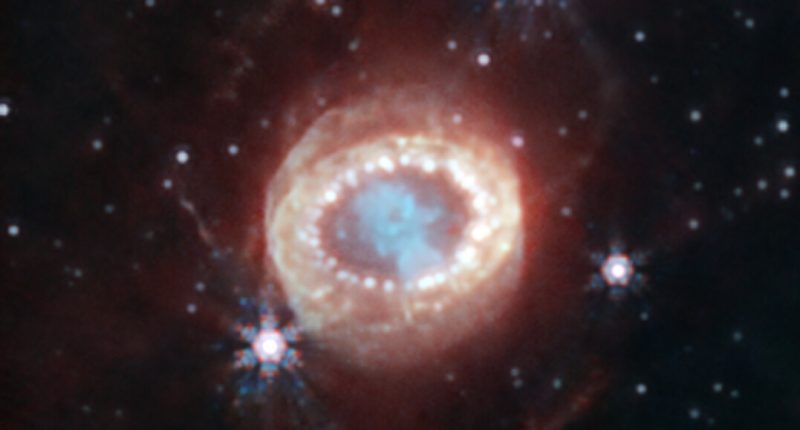ASTRONOMERS have uncovered evidence that a neutron star exists at the center of a peculiar supernova.
For the last 400 years, Supernova 1987A has been the only star explosion visible to the naked eye.
The star explosion is located in a neighboring dwarf galaxy and has been observed for more than three decades.
However, scientists have not seen any compact objects expected to have been produced during the explosion.
This means that, until now, no one knew whether the neutron star persisted or collapsed into a black hole.
Neutron stars are the collapsed core of a massive supergiant star and have a total mass of between 10 and 25 solar masses.
Scientists had their suspicions that a neutron star persisted because they detected neutrinos, tiny sub-atomic particles, around 37 years ago.
Now, this has been proved in a new study thanks to the James Webb Space Telescope (JWST).
Using the JWST, researchers were able to observe the supernova at infrared wavelengths.
Their observations found evidence of heavy argon and sulfur atoms whose outer electrons had been stripped off.
Most read in News Tech
Experts said this could only be the case if there is a bright source of ultraviolet and X-ray radiation from a neutron star.
Co-author Professor Mike Barlow, of the physics and astronomy department at University College London, said: “Our detection with James Webb’s MIRI and NIRSpec spectrometers of strong ionized argon and sulfur emission lines from the very center of the nebula that surrounds Supernova 1987A is direct evidence of the presence of a central source of ionizing radiation.
“Our data can only be fitted with a neutron star as the power source of that ionizing radiation.
“This radiation can be emitted from the million-degree surface of the hot neutron star, as well as by a pulsar wind nebula that could have been created if the neutron star is rapidly spinning and dragging charged particles around it.
“The mystery over whether a neutron star is hiding in the dust has lasted for more than 30 years and it is exciting that we have solved it.”
He added that supernovae are the main sources of chemical elements that make life possible.
“There is no other object like the neutron star in Supernova 1987A, so close to us and having formed so recently,” he said.
“Because the material surrounding it is expanding, we will see more of it as time goes on,” he continued.
A supernova is a violent explosion that comes at the end of a star’s lifecycle.
The star’s luminosity after eruption increases to millions of times its normal level and can cause it to shine brighter than its entire host galaxy.
The collapsed core of these exploding stars can result in many smaller neutron stars.
READ MORE SUN STORIES
These are composed of the densest matter in the known universe or black holes.
The new study was published in the journal Science and involved researchers from the UK, Ireland, Sweden, France, Germany, the United States, the Netherlands, Belgium, Switzerland, Austria, Spain and Denmark.
This post first appeared on Thesun.co.uk










